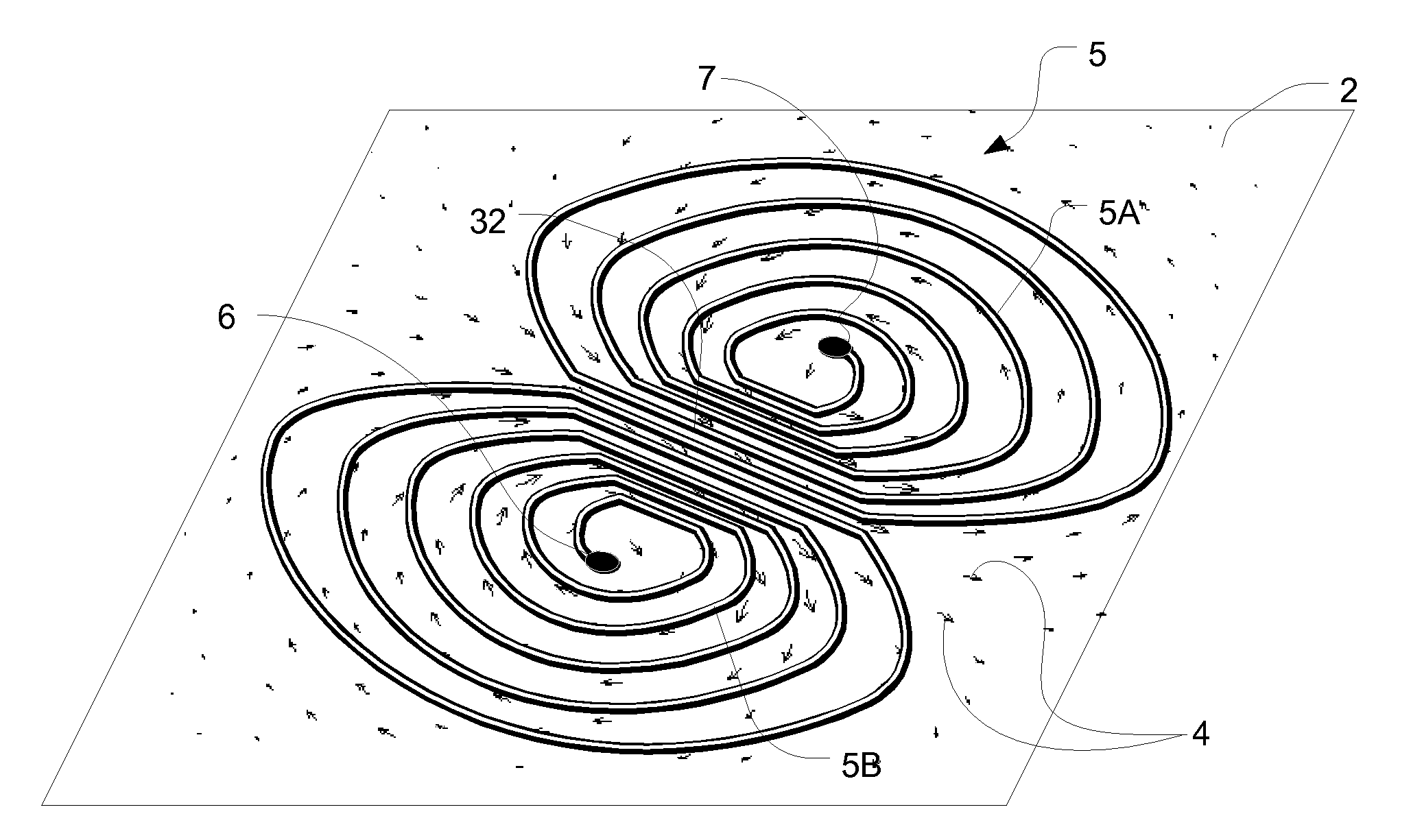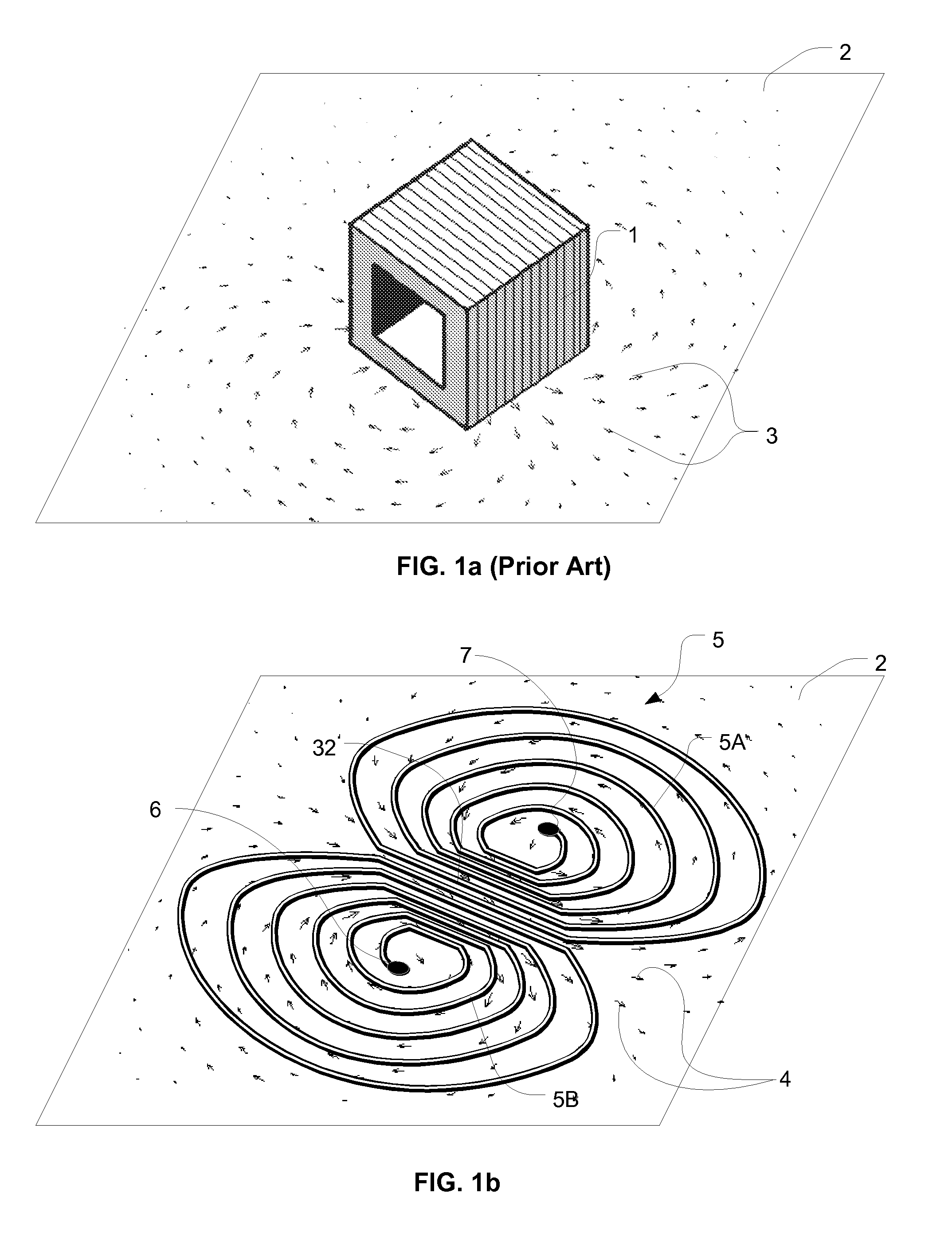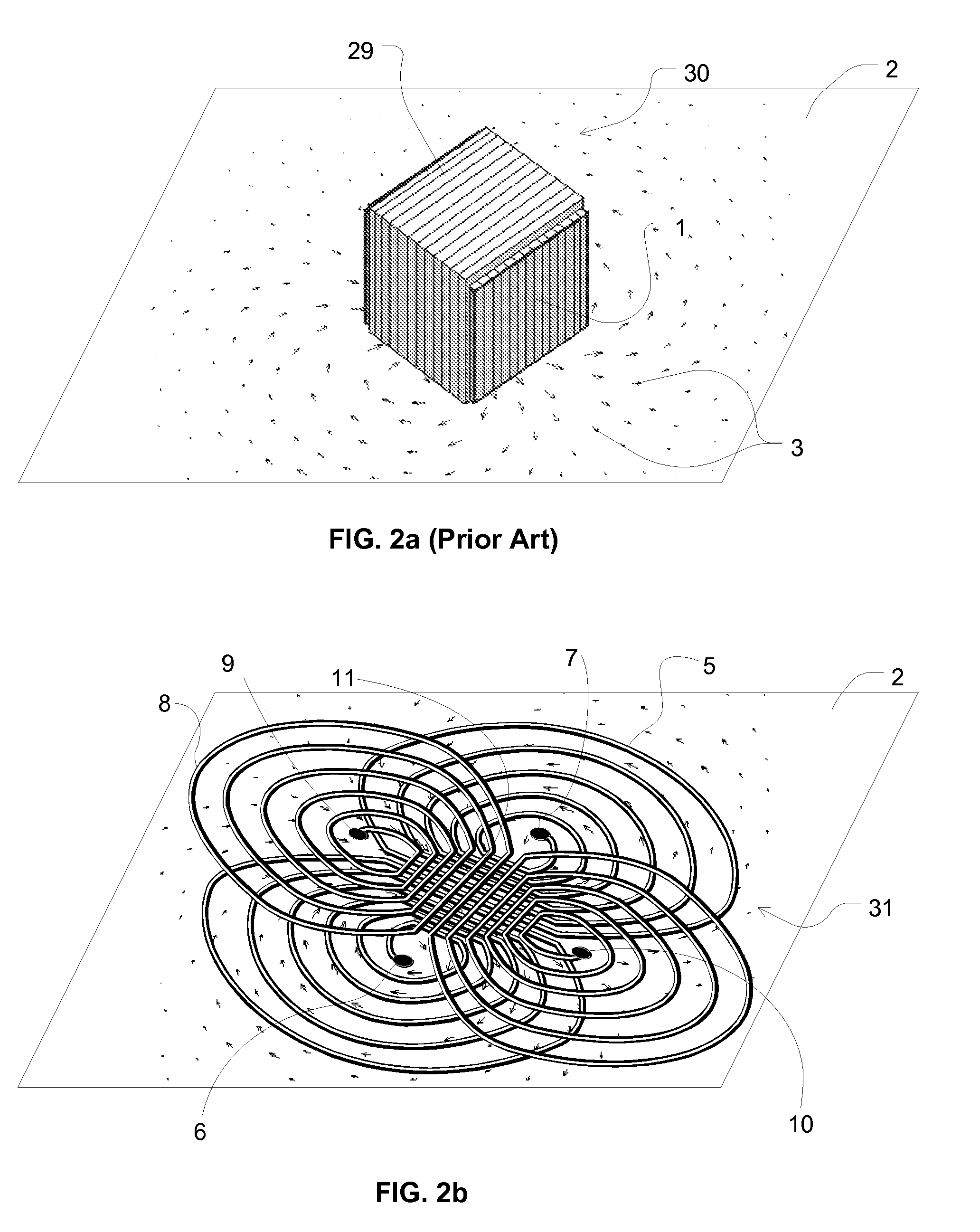2d coil and a method of obtaining ec response of 3D coils using the 2d coil configuration
a technology of 2d coils and configurations, applied in the direction of magnetic properties, instruments, material magnetic variables, etc., can solve the problems of insensitive arrangements, inability to overcome conductivity and permeability changes, and difficulty, etc., to achieve the effect of reducing costs, facilitating access, and high resolution
- Summary
- Abstract
- Description
- Claims
- Application Information
AI Technical Summary
Benefits of technology
Problems solved by technology
Method used
Image
Examples
Embodiment Construction
[0036]FIG. 1a shows an EC flow 3 induced on a conductive test surface 2 by a conventional 3D EC drive coil 1. As can be seen, the driver coil 1 is wound on a 3D cubic core and the winding path includes two planes perpendicular to surface 2. In general, if EC drivers are wound on a winding plane parallel to the test surface, the induced EC flow on the test surface is parallel to the driver coil. For the case of the 3D EC drive, drive coil 1 is wound on a 3D structure that contains planes that are erected from (not parallel to) the test surface, whereas EC flow 3 is confined within test surface 2. EC flow 3 can therefore not always be parallel to driver coil 1. Instead, EC flow 3 is driven by the interaction between surface 2 and the magnetic flow generated by the driver 1 at surface 2 and forms a pair of whirls on surface 2 as shown in FIG. 1a.
[0037]Referring now to FIG. 1b, a basic embodiment of the present disclosure is shown to include a pair of whirl-shaped 2D coil wound on a pl...
PUM
 Login to View More
Login to View More Abstract
Description
Claims
Application Information
 Login to View More
Login to View More - R&D
- Intellectual Property
- Life Sciences
- Materials
- Tech Scout
- Unparalleled Data Quality
- Higher Quality Content
- 60% Fewer Hallucinations
Browse by: Latest US Patents, China's latest patents, Technical Efficacy Thesaurus, Application Domain, Technology Topic, Popular Technical Reports.
© 2025 PatSnap. All rights reserved.Legal|Privacy policy|Modern Slavery Act Transparency Statement|Sitemap|About US| Contact US: help@patsnap.com



